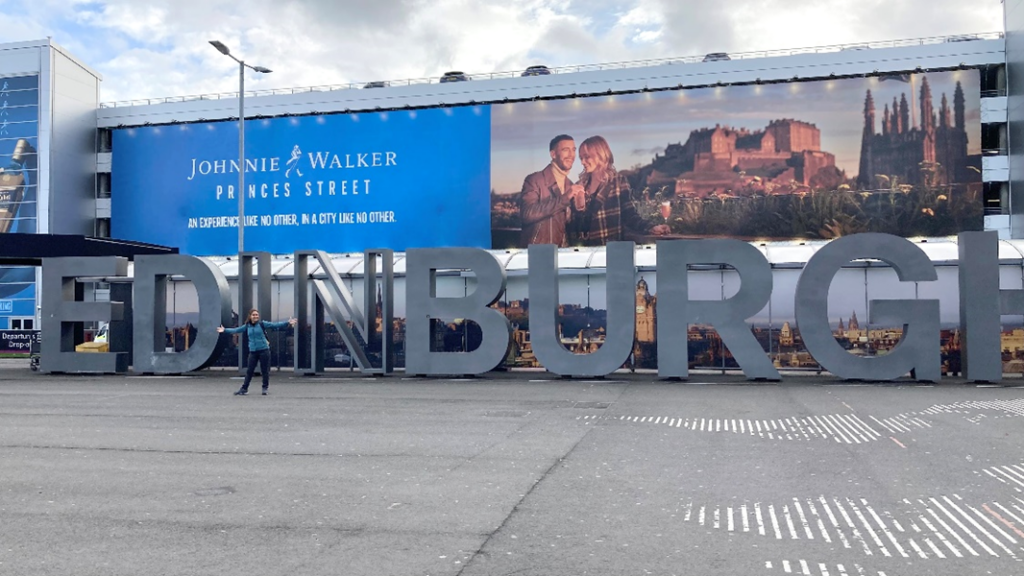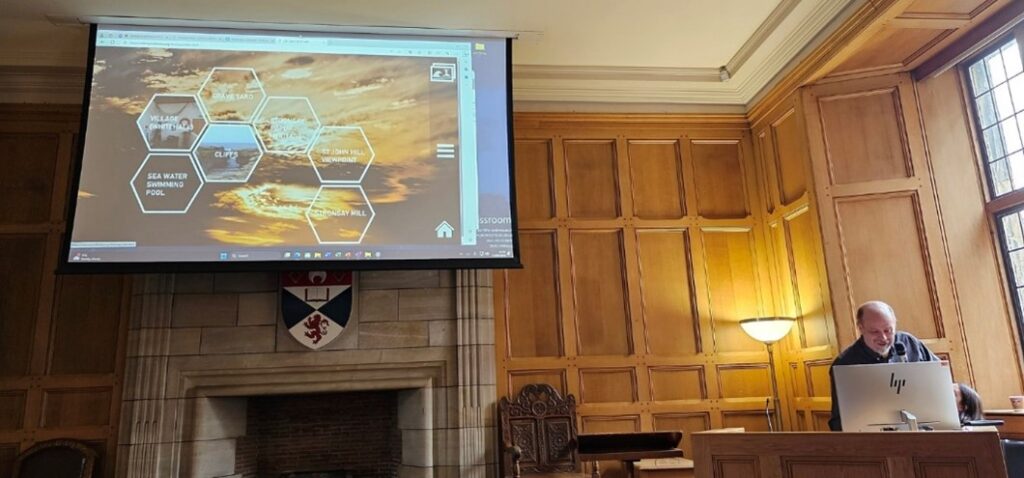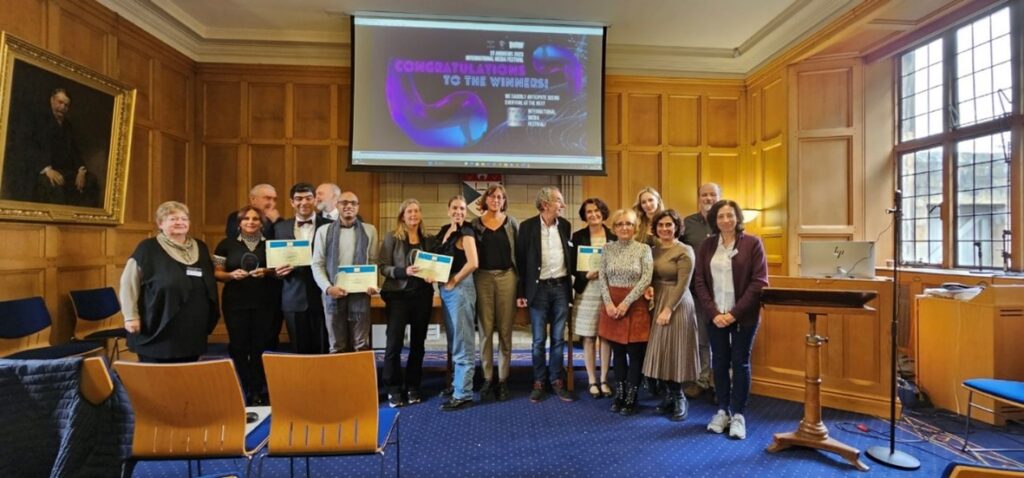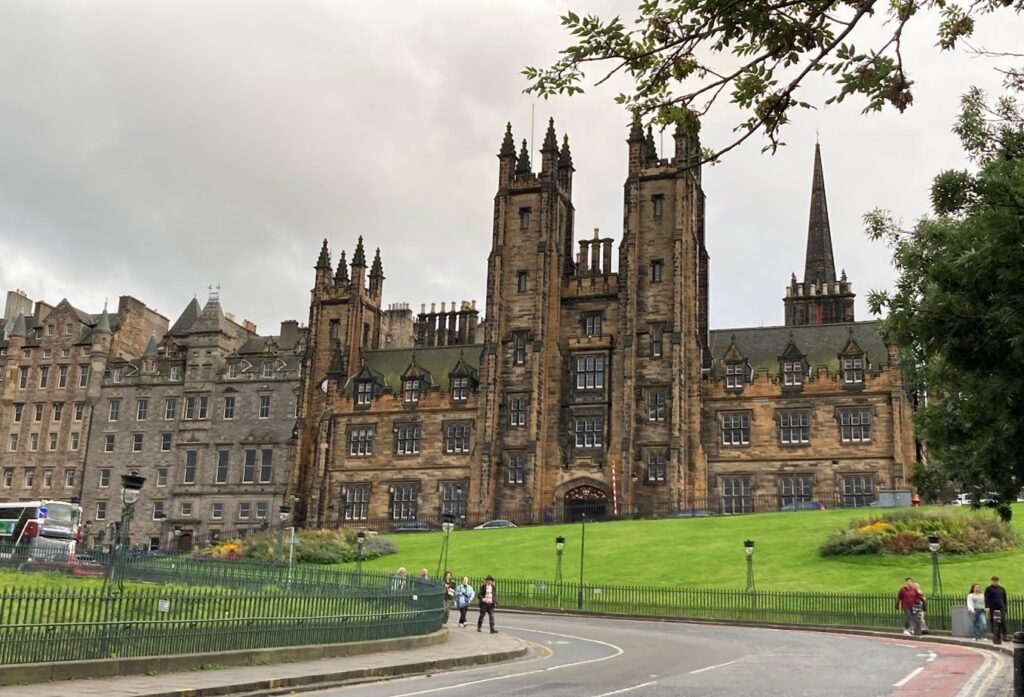A Scottish Sojourn: Reflections on ICOM-AVICOM 2023
Written by Rema Zeynalova, Chief Specialist, Azerbaijan National Carpet Museum (ITP 2018, Azerbaijan)
In September of this year, the ICOM-AVICOM Annual Conference, along with the Festival of Audiovisual and Innovative Museum Media Productions (F@IMP), unfolded at the Parliament Hall of the prestigious University of St Andrews in the picturesque town of St. Andrews, Scotland. My journey to the conference commenced on September 21st 2023, when I landed at Edinburgh Airport, Scotland. From there, I eagerly made my way to the conference venue in the charming and historically rich city of St Andrews, situated along the east coast of Scotland, famed for its prestigious university, breathtaking coastal landscapes, and cultural heritage.

The hybrid conference, kicking off on 22nd September, witnessed over 20 speakers hailing from diverse countries, presenting thought-provoking papers that brought together museum professionals from around the globe to share their research findings. The central theme for this year’s gathering was “Sustainable Preservation and Promotion of Heritage: The Virtual Museum,” encouraging presenters to delve into the realm of museums in the context of the virtual world. The theme aimed to explore how virtual museums can sustainably preserve and promote cultural heritage through the lenses of technology, accessibility, and global collaboration.

Throughout the conference’s duration, engaging speakers presented on a variety of subjects, including strategies for attracting visitors, breaking down barriers to access and promoting sustainability, systematic approaches, and showcasing real-world cases. Moreover, attendees participated in workshops addressing themes like “Under Construction: Understanding Virtual Museum and Sustainability” and “Virtual Museums and Sustainable Future.”

Of the many intriguing presentations, “Virtual Museums: A Threat for ‘Real Museums’ or an Additional Value to Them?” by Lara Corona, researcher at Universitat Internacional de Catalunya, Barcelona, Spain, stood out. Lara’s presentation delved into the potential benefits and challenges posed by virtual museums, sparking a debate on their impact on physical museum attendance and preservation of cultural artifacts.
Another captivating presentation, “Climate Change and the Virtual Museum” by Kamila Oles, Alan Miller, and the Open Virtual Worlds Research Group at the School of Computer Science, University of St Andrews, explored the intersection of climate change and the virtual museum. It shed light on how virtual museums can play a role in raising awareness about climate-related issues and advocating for environmental sustainability through digital exhibitions and interactive experiences.

Personally, being part of this conference was an invaluable opportunity. I had the honor of presenting a paper titled “Breaking Boundaries at the Azerbaijan National Carpet Museum: Virtual Museum as a Tool for Increasing Accessibility.” In this paper, I shared insights into the museum’s innovative “Celebrity Virtual Tour” project, highlighting its advantages and the significant contribution it made to the museum’s outreach and impact.

The conference concluded with the FAIMP Award Ceremony, a celebratory event where all the winners were honored and received their well-deserved prizes.

Aside from the academic aspects, the ICOM-AVICOM conference featured social events that provided profound insights into Scottish culture and society. As part of the conference program, we visited iconic sites like St. Andrews Cathedral and St. Andrews Castle, both significant historical landmarks. Additionally, we explored Discovery Point and RRS Discovery in Dundee, where we delved into the fascinating history of Antarctic exploration aboard the RRS Discovery, a symbol of Scottish national heritage.








As part of the conference, a memorable sustainable Ceilidh evening was arranged. It was a delightful occasion where all participants immersed themselves in the lively rhythms of Celtic music and traditional group dancing, creating an atmosphere of pure joy and camaraderie.


After the conference concluded, my journey extended to Edinburgh, where I delved into exploring the city and its museums. Beginning with an exploration of Edinburgh’s rich history and architecture, I culminated my visit with an enriching experience at the National Museum of Scotland. The National Museum of Scotland is a true marvel, boasting exhibitions encompassing an astonishing array of topics. From the Roman era to contemporary times, the museum meticulously presents Scotland’s unique and extensive history. Beyond Scottish historical artifacts, the museum displays a diverse collection from various corners of the globe, offering exhibits on natural history, geology, science, art, transportation, technology, and cultures worldwide. The museum is brimming with interactive displays, rendering it a compelling destination deserving of return visits, given the multitude of engaging exhibits tailored for both children and adults.










Fortunate timing allowed me to experience the recently unveiled “Beyond the Little Black Dress” exhibition at the museum. The exhibition explores how the various shades of black have transformed the little black dress into a paradoxical garment. It has evolved from a refined cocktail attire in the early 20th century to encompass leather and latex donned by individuals in punk and fetish subcultures. Highlighting a diverse collection of over 60 garments, the exhibition traces a century of fashion evolution through meticulously curated themed and immersive displays. In addition to Chanel’s influential contributions, the exhibition highlights early designs by Yves Saint Laurent, Dior, and Schiaparelli, as well as contemporary creations by Gareth Pugh, Simone Rocha, and Off-White.






Overall, the ICOM-AVICOM conference proved immensely valuable, enriching me with new knowledge and experiences. The diversity of presentations and speakers broadened my horizons, allowing me to learn from various discussions and the unique perspectives of each conference participant. This experience was a window to understanding cultures beyond our immediate surroundings. It provided an opportunity to forge new friendships, broaden my professional network, and establish meaningful connections with museum professionals globally, laying the foundation for future collaborations.

Furthermore, I had the pleasure of meeting Yohana Frias, an ITP fellow, with whom I engaged in insightful discussions about the key themes of the ICOM-AVICOM conference and our shared interests in future projects.
Lastly, I would like to extend my heartfelt gratitude to the Azerbaijan National Carpet Museum for their support, which made my participation in this transformative event possible.
